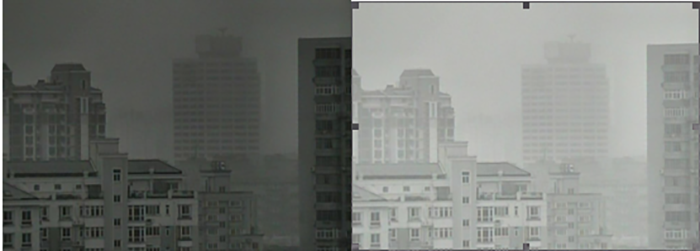The role of SONY FCB camera’s fog transmission function in foggy days is no doubt, the advent of high-definition fog transmission camera, largely thanks to the fog transmission HD electric lens, but the fog transmission principle of the camera itself has also been greatly improved in the near end time.

Fog-permeating camera principle
Natural light consists of a combination of different wavelengths of light waves, the visible range of the human eye is roughly 390nm-780nm, the wavelength from long to short corresponding to red, orange, blue, green, orange and violet seven colors, of which wavelength less than 390nm is called ultraviolet, wavelength greater than 780nm is called infrared. Fog, smoke and other small particles in the air have a blocking effect on the light, so that the light is reflected and cannot pass, so the human eye that can only receive visible light can not see the object at the back door of the smoke and fog. The longer the wavelength, the stronger the diffraction ability, that is, the stronger the ability to bypass the blockers, while the infrared ray has a longer wavelength, it is less affected by aerosols when propagating, and can pass through a certain concentration of haze dust to achieve accurate focusing, which is the basis for optical fog penetration.
Three elements to achieve fog penetration
In the range of invisible light, there is a frequency of light can penetrate the fog, but because the wavelength is different, it needs to be processed on the camera to achieve the purpose of focusing it, and it also needs to be redesigned on the camera to image the invisible light of this frequency, because the invisible light does not have the corresponding visible light color map. So the image presented on the monitor is black and white.
(1) Lens with chromatic aberration compensation
In order to get a better fog penetration effect, the design of the lens is very important. In order to ensure that the visible light imaging system can get the ideal image before and after the fog, the lens must ensure that the visible light and near infrared band have a high transmittance, and the color difference is corrected during the switching process of the two bands to ensure that the focal length is not adjusted after the switch.

(2) CCD with high near-infrared sensitivity
The ultra-high sensitivity CCD camera with good frequency response curve from the visible band to the near infrared band is a necessary condition for an excellent system, so that only one camera can be used separately in the visible band and near the red line band by transforming the filter method. In order to facilitate the use of visible wavelengths to improve the clarity of the image and the use of near-infrared wavelengths to penetrate the mist to increase the purpose of observation distance.
(3) Image processing of black level stretching
The scattering of water vapor and solid particles over the ocean and the city causes the color of the distant distance within the visible distance to be dull, gray and white light, and the distant imaging can not exceed the visible distance, and the use of filters undoubtedly plays a small role, but to achieve the clearer the image from the distance, the better the better the use of the distance. It is necessary to use electronic processing technology to further filter out the interference signal of the off-white film caused by scattering, and then process the useful white or black and white signal to obtain excellent image signals of distant objects.
 Sony FCB camera block
Sony FCB camera block